Decimal fingers

Fingers are children’s favourite and very „handy” calculator. The little students can use them with unbelievable skill and inventiveness. Sometimes I have a feeling that, like old-time bookkeepers armed with their abaci, they can calculate with them anything they like. But above all – they add. And although they have only ten of them – this number doesn’t seem to be a barrier their fingers are not able to cross.
Simon (6) has to add 7 and 8. The fingers come into play. ‘Won’t you be short of them?’ I ask. ‘Sure I won’t’, says the boy confidently. Simon belongs to these children, who, unlike most of them, prefers to start the addition from the smaller number, because, as he explains, he likes it easier at the beginning. So, for a start, he ‘closes’ the number 7 in one fist (it would hold any other number, if needed), and makes use of the other hand:

Eight…
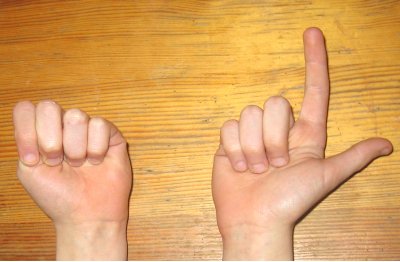
… nine…

… ten…
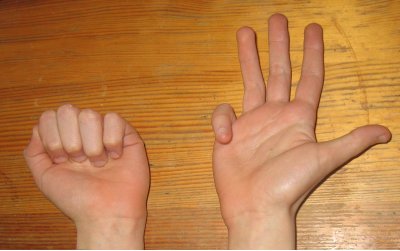
… eleven…

… twelve… At this moment he has to release the 7 he holds in his left fist, because he needs this hand for further calculation. But it doesn’t seem to bother him.
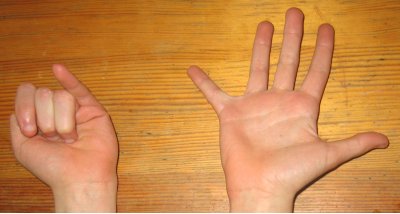
… thirteen…
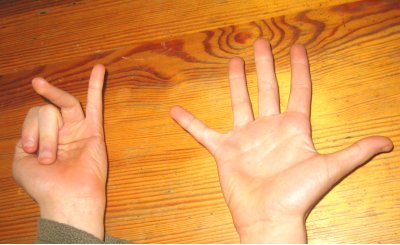
… fourteen…
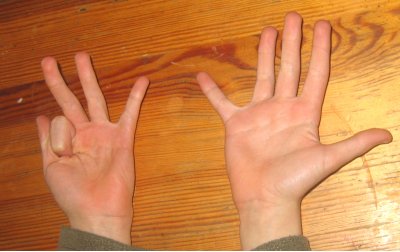
… fifteen.
‘Fifteen!’ he announces.
‘And how do you know you have already added eight?’, I investigate.
‘Why, I see there are eight fingers open, just two short of ten, don’t I?’
Well, it looks like Simon was right and he had enough fingers to finish the calculation. And what if the number held in the fist was even bigger? – if it had two, three or four digits? And so would be the other number? Would our “handy’ calculator still be able to support such addition? My fingers are itching to try.
I imagine having to add in my head two four-digit numbers, say: 5728 and 2585 (I don’t have a calculator or paper with me, my mobile went flat, but I remember the balance on my account and want to check if I have enough money to buy a kitchen suite and a sofa. :-). Should I start my “accounting” from thousands or from units? Either way would do, let’s do it from units. I close the bigger number in one hand and start adding the other number to it, counting the digits on my fingers:
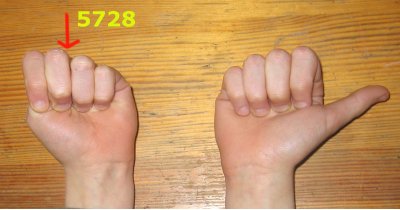
5729...

5730... 5731, 5732...

... 5733 – the units done, I now close this number in my hand, and start counting the totalled tens:
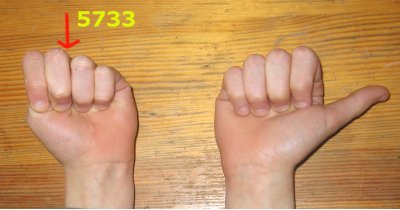
5743...

5753, 5763, 5773...

5783... the other hand comes to the aid of the first one:

5793, 5803...

5813 – another number to be closed in my hand, before I start adding the hundreds

5913, 6013, 6113, 6213...

6313 – the last number which I ‘capture’, in order to add the thousands to it.
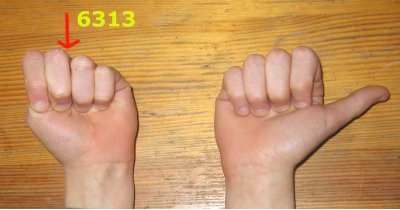
7313, 8313.
Done! We can now do the same, starting from the thousands and checking if the result would be the same. Great fun for the family, a real “warm-up’ and ‘stretching exercise’ for the brain. I encourage you to try it for yourself. With a little practice you can make a family contest out of it and see who will do faster and more accurate finger-addition of big numbers. I wonder who will win it: the adults or the children? I cross my fingers for all of you and may the best man win! :-).






